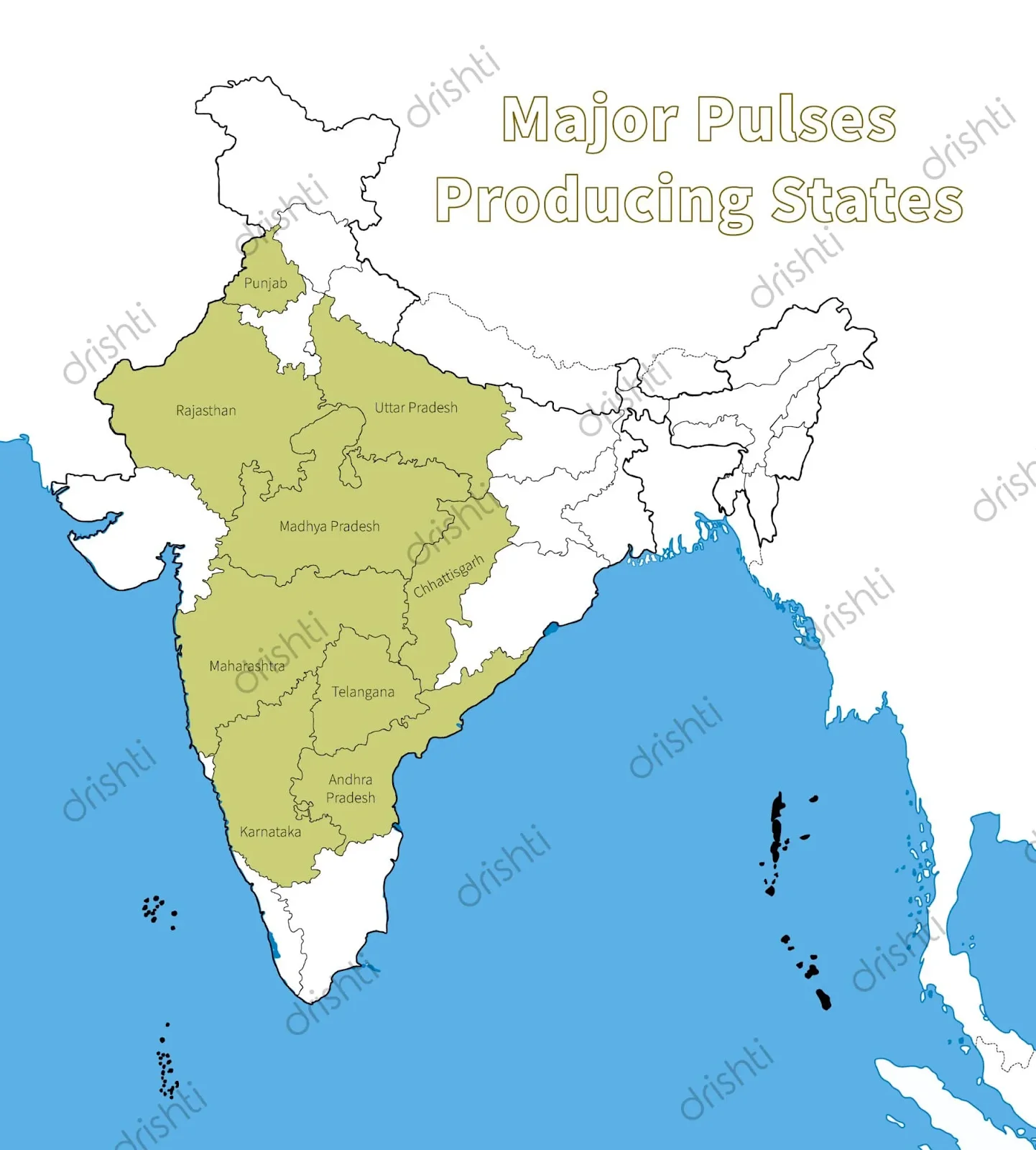-
15 Jul 2025
GS Paper 3
Economy
Day 26: India’s dependence on pulse imports contradicts its goal of agricultural self-reliance. Discuss the economic, nutritional, and ecological implications of intensifying pulse production under the Mission for Aatmanirbharta in Pulses. (250 words)
Approach :
- Start by explaining the import paradox despite India's top position in pulse production and consumption.
- Briefly mention the objectives of the Mission for Aatmanirbharta in Pulses.
- Discuss its economic benefits, nutritional gains and ecological implications.
- Conclude with a suitable way forward.
Introduction:
India is both the largest producer (25%) and consumer (27%) of pulses, yet it remains heavily reliant on imports (14%), especially from countries like Myanmar, Canada, and Mozambique. To reduce this dependency, the government launched the "Mission for Aatmanirbharta in Pulses"—a six-year national initiative aimed at achieving self-sufficiency in key pulses like tur (pigeon pea), urad (black gram), and masoor (red lentil). This mission has significant economic, nutritional, and ecological implications for India's food security and sustainability.
Body:
Economic Implications
- Reduced Import Bill: Enhancing domestic production reduces the burden on foreign exchange and trade deficits.
- In FY 2024–25, India imported pulses worth $5.5 billion—triple the annual average of $1.7 billion from 2017–18 to 2022–23.
- Farmer Income Diversification: Pulses, being less input-intensive and suitable for rainfed regions, offer an additional income stream to small and marginal farmers, particularly in states like Madhya Pradesh, Rajasthan, and Maharashtra.
- Stability through MSP and Procurement: Pulses like arhar, moong, and urad have seen increased Minimum Support Prices (MSP) and assured procurement under NAFED, making pulse cultivation more remunerative.
- Challenge of Market Absorption: However, if procurement infrastructure is weak or delayed, price crashes during harvest season may discourage farmers despite policy push.
Nutritional Implications
- Primary Protein Source: Pulses are the chief protein source for over 60% of India's vegetarian population. Promoting pulses addresses widespread protein-energy malnutrition, particularly in low-income groups.
- Nutrition Security: As per NFHS-5, over 35% of children under five are stunted. Including pulses in public schemes like Mid-Day Meals and ICDS can improve nutrition outcomes.
- Dietary Diversity: Pulses enrich the diet with essential nutrients like iron, folate, and zinc, which are crucial in combating hidden hunger.
Ecological Implications
- Sustainable Crop: Pulses require less water and are suitable for dryland agriculture, covering over 60% of India’s net sown area.
- Soil Health Enhancer: Being nitrogen-fixing crops, pulses reduce the need for synthetic fertilizers, rejuvenate soil fertility, and lower greenhouse gas emissions.
- Climate Resilience: Short growing cycles and low input needs make pulses ideal for climate-smart agriculture in the era of erratic rainfall and droughts.
Conclusion:
India’s $5 trillion economy goal needs a resilient farm sector. The Aatmanirbharta in Pulses Mission must be backed by efficient execution, farmer engagement, and private partnership. Fixing value chains, ensuring fair prices, and improving post-harvest infrastructure are key to reducing import dependence and achieving agri self-reliance.






